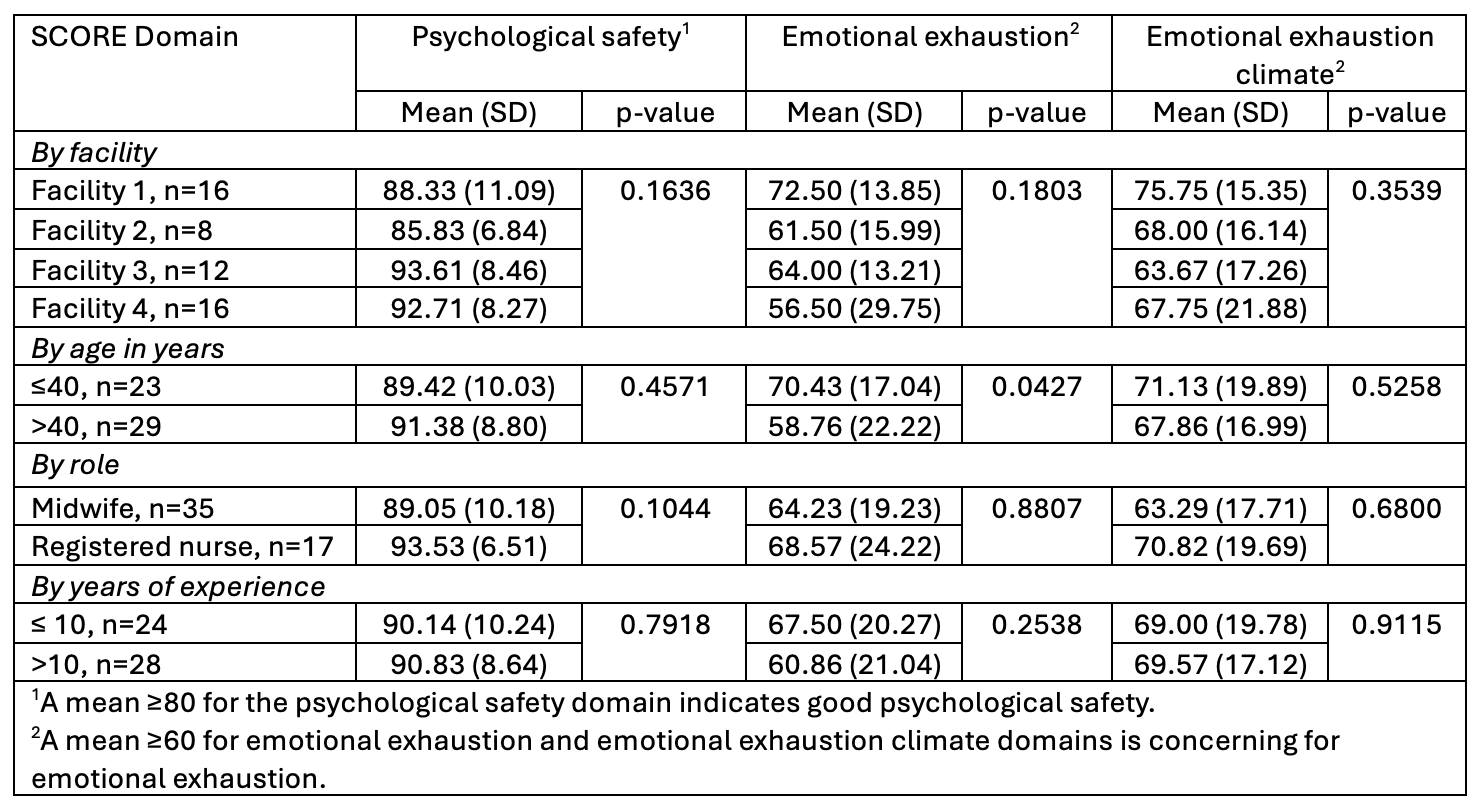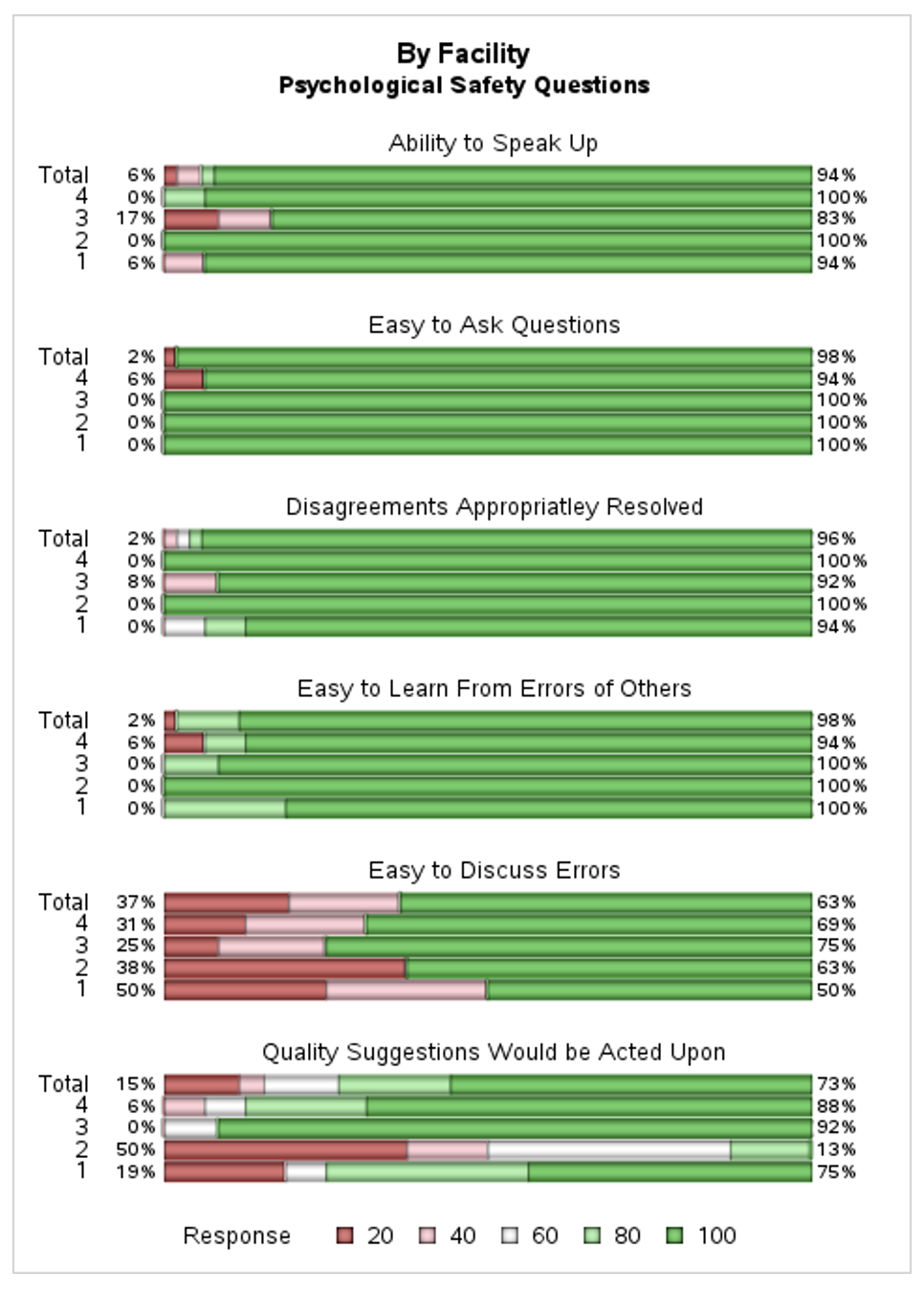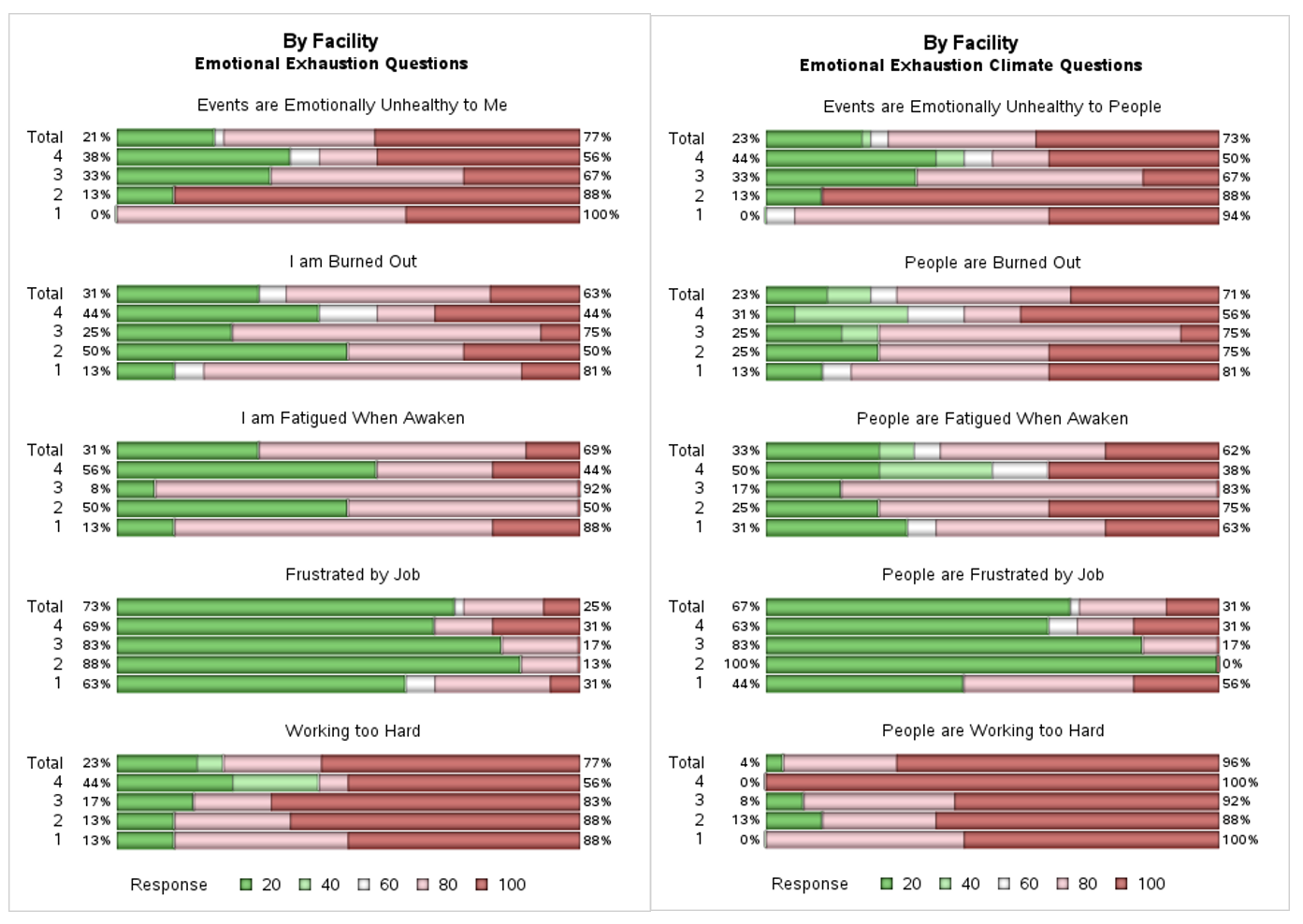Global Neonatal & Children's Health 6
Session: Global Neonatal & Children's Health 6
803 - Psychological safety and emotional exhaustion among nurse midwives at four Democratic Republic of the Congo health facilities
Sunday, April 27, 2025
8:30am - 10:45am HST
Publication Number: 803.6084
Kourtney Bettinger, University of Kansas School of Medicine, Prairie Village, KS, United States; Tracy L. Nolen, RTI International, Research Triangle Park, NC, United States; Daniel Ishoso, Kinshasa School of Public Health, Kinshasa, Kinshasa, Congo, (Congo – Kinshasa); Benjamin Chi, University of North Carolina at Chapel Hill School of Medicine, Chapel Hill, NC, United States; Eric Musalu. Mafuta, Ecole de Santé Publique de Kinshasa/UNIKIN, Kinshasa, Kinshasa, Congo, (Congo – Kinshasa); Jackie Patterson, University of North Carolina at Chapel Hill School of Medicine, Chapel Hill, NC, United States
- KB
Kourtney Bettinger, MD, MPH
Clinical Associate Professor
University of Kansas School of Medicine
Prairie Village, Kansas, United States
Presenting Author(s)
Background: To optimize clinical care, healthcare environments should maximize psychological safety while minimizing emotional exhaustion experienced by healthcare workers. The Safety, Communication, Operational, Reliability, and Engagement (SCORE) Survey is a validated metric to evaluate psychological safety and emotional exhaustion that has been used in high-resource healthcare settings.
Objective: To assess psychological safety and emotional exhaustion among nurse midwives in the Democratic Republic of the Congo (DRC).
Design/Methods: We conducted a cross-sectional study among nurse midwives from 4 birth facilities in Kinshasa, DRC. Participants completed a demographic questionnaire and Likert scale responses for domains of the SCORE survey: psychological safety (6 questions), emotional exhaustion (5 questions), and emotional exhaustion climate (5 questions). We calculated mean scores with standard deviations (SD) for the 3 domains and explored associations of these scores with demographic characteristics using generalized linear models. We visualized responses to individual SCORE questions using plots both overall and by facility and other demographics.
Results: From April to May 2024, 52 nurse midwives completed the survey questions. Mean age was 44.3 years (SD 10.6) and 54% of respondents had over 10 years of experience. Two-thirds were midwives; one-third were registered nurses. Nurse midwives scored a mean of 91 (SD 9.3) for psychological safety, a mean of 64 (SD 20.8) for emotional exhaustion and a mean of 69 (SD 18.2) for emotional exhaustion climate. There was no evidence of scores differing significantly by facility (p>0.05); nurse midwives ≤40 years of age reported more emotional exhaustion compared to those >40 years of age (mean 50 vs 61, p=0.0427; Table 1). In aggregate, 4 of 6 psychological safety responses were >90% positive; 37% answered that it is difficult to discuss errors and 15% answered that quality suggestions would not be acted upon (Figure 1). In aggregate, 4 of 5 emotional exhaustion responses and 4 of 5 emotional exhaustion climate responses were concerning for emotional exhaustion (Figure 2). Emotional exhaustion climate response distributions were similar to emotional exhaustion responses.
Conclusion(s): Congolese nurse midwives expressed good psychological safety but high levels of emotional exhaustion in themselves and their colleagues. Interventions that address emotional exhaustion for healthcare workers who provide intrapartum and postnatal care are needed.
Table 1. Psychological safety, emotional exhaustion, and emotional exhaustion climate scores by facility and demographics.

Figure 1. Plots of psychological safety responses in aggregate and by facility.
 Smaller scores represent more negative values/responses while higher scores represent more positive values/responses. The percentages to the left of the reports are the sum of the negative responses while the percentages to the right are the sum of the positive responses. Percentages printed exclude neutral responses.
Smaller scores represent more negative values/responses while higher scores represent more positive values/responses. The percentages to the left of the reports are the sum of the negative responses while the percentages to the right are the sum of the positive responses. Percentages printed exclude neutral responses.Figure 2. Plots of responses to emotional exhaustion (A) and emotional exhaustion climate domains (B) in aggregate and by facility.
 Smaller scores represent more positive values/responses while higher scores represent more negative values/responses. The percentages to the left of the reports are the sum of the positive responses while the percentages to the right are the sum of the negative responses. Percentages printed exclude neutral responses.
Smaller scores represent more positive values/responses while higher scores represent more negative values/responses. The percentages to the left of the reports are the sum of the positive responses while the percentages to the right are the sum of the negative responses. Percentages printed exclude neutral responses.Table 1. Psychological safety, emotional exhaustion, and emotional exhaustion climate scores by facility and demographics.

Figure 1. Plots of psychological safety responses in aggregate and by facility.
 Smaller scores represent more negative values/responses while higher scores represent more positive values/responses. The percentages to the left of the reports are the sum of the negative responses while the percentages to the right are the sum of the positive responses. Percentages printed exclude neutral responses.
Smaller scores represent more negative values/responses while higher scores represent more positive values/responses. The percentages to the left of the reports are the sum of the negative responses while the percentages to the right are the sum of the positive responses. Percentages printed exclude neutral responses.Figure 2. Plots of responses to emotional exhaustion (A) and emotional exhaustion climate domains (B) in aggregate and by facility.
 Smaller scores represent more positive values/responses while higher scores represent more negative values/responses. The percentages to the left of the reports are the sum of the positive responses while the percentages to the right are the sum of the negative responses. Percentages printed exclude neutral responses.
Smaller scores represent more positive values/responses while higher scores represent more negative values/responses. The percentages to the left of the reports are the sum of the positive responses while the percentages to the right are the sum of the negative responses. Percentages printed exclude neutral responses.
